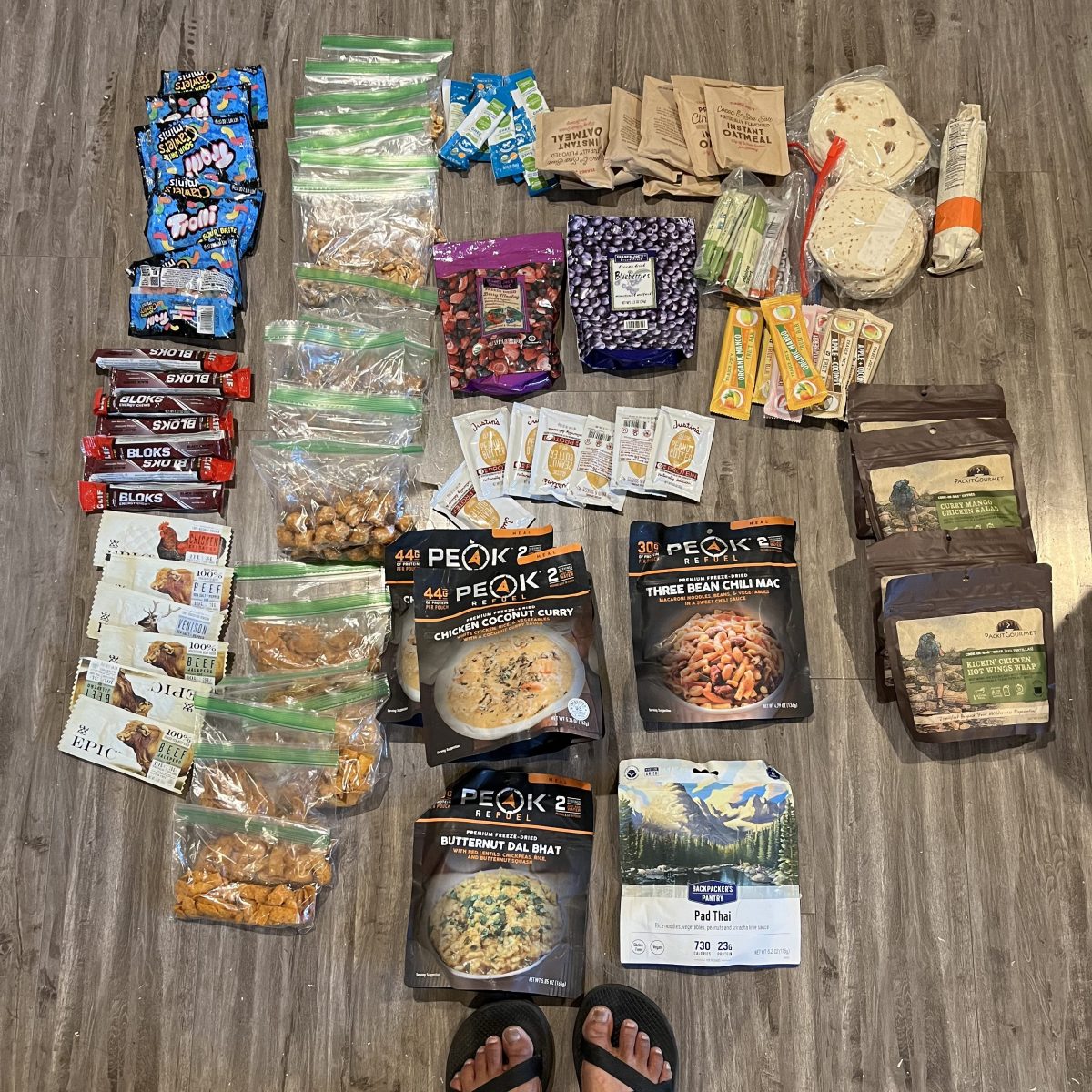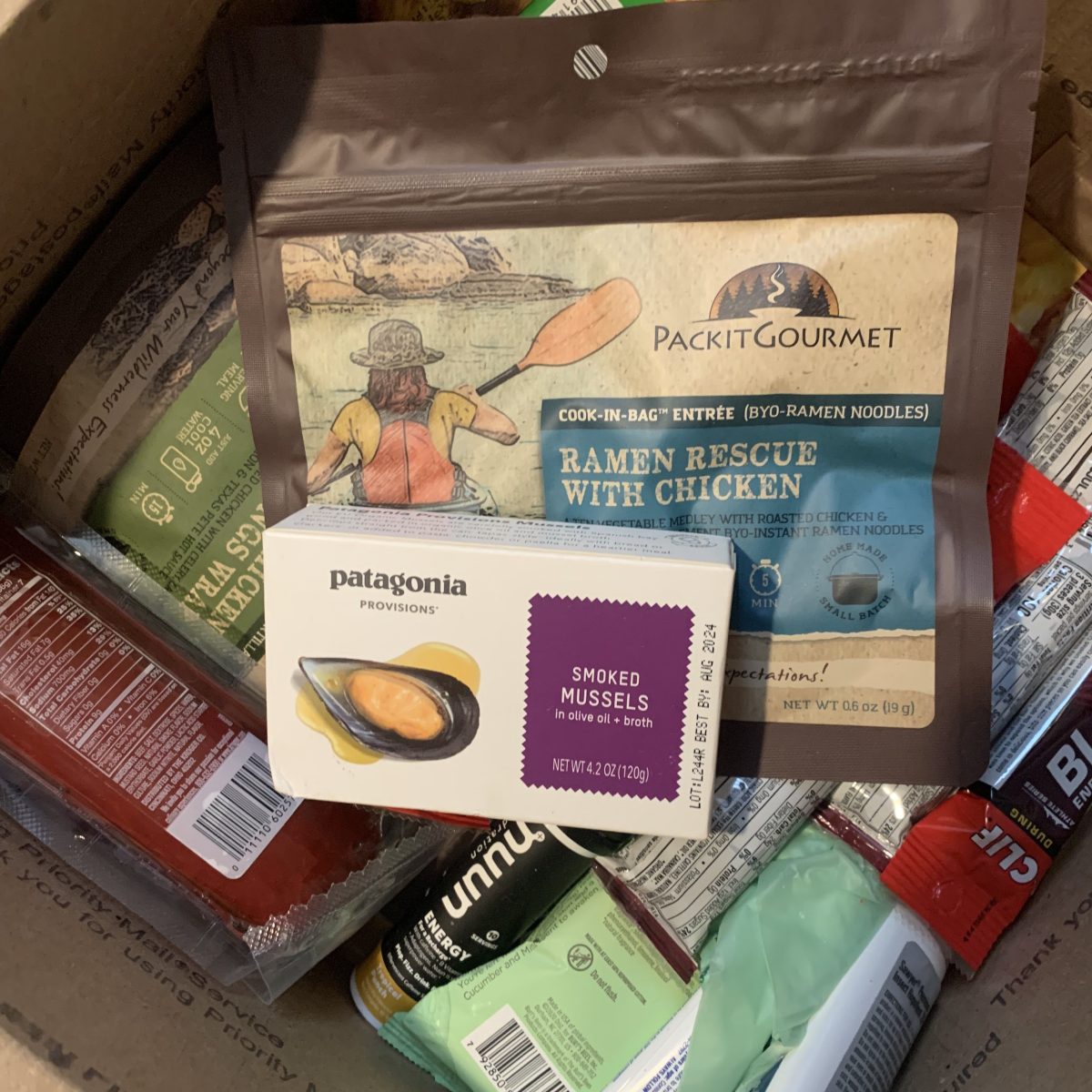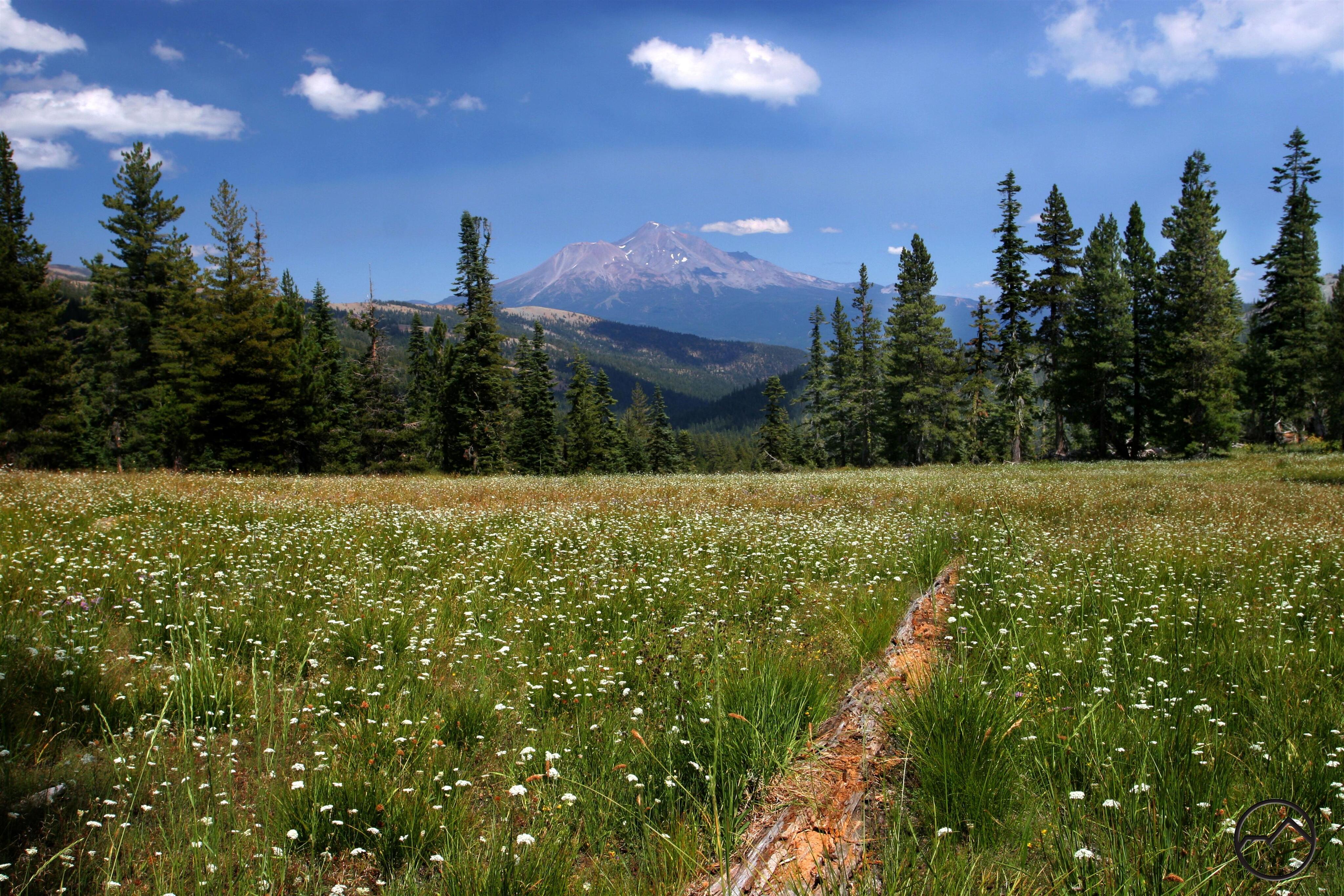In the early summer of 2022, I sat in my basement, surrounded by my laptop, five packing boxes and an absolute mountain of food. In a few weeks, I’d start my monthlong journey along the Washington section of the Pacific Crest Trail. I was packing everything I’d eat during that time so I could ship it to resupply locations or hand boxes off to friends and family meeting me along the way.
I’d lived in Washington for six years, developed a penchant for solo backpacking and was eager to see the wilderness of my state on a continuous footpath. By late June, I was sure of my body’s ability to hike double-digit miles day after day. But my confidence in fueling myself wavered. I’d never done anything like this before—namely, subsisted on packaged, shelf-stable or dehydrated meals for a month.
I’m an inveterate researcher by profession. Ahead of my thru-hike, I spent hours reading blogs and watching YouTube videos to understand proper fueling for long trails without being weighed down with food. While some people swore by certain snacks like trail mix and protein bars (both of which I abhor), others gave me permission to bring sustenance I’d be excited to eat. Some harped on the 100-1 ratio: For 1 ounce of food, you want at least 100 calories. Others emphasized the importance of protein: “Your leg muscles are going to need every bit of recovery they can get.” But the piece of information I saw repeatedly, especially for women athletes: Don’t skimp on fat.
In my basement, I stared at the carefully partitioned bags of gummy worms, but corn chips and peanut-butter-filled pretzels. There was a huge pile of single-serve peanut butter packets next to boxes and boxes of coconut oil and ghee.
What I planned to eat on the trail was a far cry from how I ate at home. I didn’t know what a month of consuming processed foods or the types of snacks often deemed “junk food” would do to my body. But it was just a month—and I was willing to give it a try.
A person’s relationship with food is personal, and sometimes tricky.
I’m a first-generation Chinese American, and my parents impressed on me that a meal wasn’t complete without vegetables, proteins and rice. Sure, that sounded all nice and balanced, but their structure of a meal seemed contrary to the messaging I was getting elsewhere.
Diet culture was pervasive in the early aughts, when I was a teenager. It was on the TV screen when I watched music videos before my parents got home: Artists and their backup singers often danced half-naked, showing off washboard abs. It was at the checkout line at the grocery store, where women’s magazines highlighted all sorts of crash weight-loss diets. It was in the movie Mean Girls (admittedly still an all-time favorite), when—for the uninitiated—new girl Cady Heron tricked her frenemy, Regina George, into eating fat-rich Kälteen bars, distorting Regina’s worldview so much that Regina had to ask: Is butter a carb?

Diet culture made me fearful of a larger body, and I began to think that eating fat, carbs or even too much protein would get me there. This sort of messaging inevitably got to me. At one point, I gave up eating rice—a decision that surely confounded my parents and likely felt like a cultural slap in the face. It also made me—a three-season varsity athlete— scared that the more protein I ate, the bigger and more muscular I’d become. Being skinny wasn’t just desirable, it signified restraint. And, presumably, being skinny felt “healthy.”
I majored in biochemistry in college, and in the spring semester of my sophomore year, I learned about the biochemical basis of metabolism. Our bodies prioritize carbohydrates for fuel, and once we work through that supply, we move on to utilizing stored fats. Protein is a last resort: If your body is processing protein for energy, it’s at the expense of maintaining your muscle tone. My professor didn’t make the direct connection between metabolism and diet for us, but once I learned the science about my body’s hidden machinations, I began putting it all together.
Unbeknownst to me, while I was learning this in college, sports researchers and nutritionists were developing a deeper understanding of not just how athletes ought to properly fuel, but also biological sex differences in metabolism. Research like this is especially relevant for how endurance athletes should eat properly—including long-distance hikers, who rely on the right balance of macronutrients and calories to appropriately fuel their extended adventures.
For a long time, researchers and nutritionists thought of women as “small men,” explains Nick Tiller, an exercise scientist at the Lundquist Institute in Los Angeles. As a result, women have historically been excluded or underrepresented in sports medicine and nutritional research. “There are some important physiological differences that need to be understood,” he says. “It’s really only been the last five to 10 years that we’ve started to pull our heads out of the sand and realize we need to start doing more targeted research on women. The fact that we’re [now] more cognizant of sex differences is a good thing, because then you can design bespoke nutrition and training programs to support athletes.”
One peer-reviewed study published in 2014 provided some early clues. Danish researchers were initially trying to understand why men were more likely to be diagnosed with type 2 diabetes and were so much more sensitive to insulin—a hormone that helps keep blood sugar levels under control—and hypothesized that hormones may play a role. When researchers looked at previously published data, they found that women were allowed more “metabolic flexibility” thanks to estrogen: Compared with men, they can process more carbohydrates after meals and more fat during exercise.
Researchers started uncovering a physiological difference between sexes as well: Women have a greater proportion of type 1 skeletal muscles, which are better suited for endurance. (Type 2 skeletal muscles, on the other hand, are responsible for short, powerful bursts of energy).
If women are—as the kids say—built different, then they would have different dietary needs to stay properly fueled for endurance activities.
“It boils down to a biological difference,” says Brenda Braaten, a nutritional biochemist and thru-hiker. “Females are steadier. They’re meant to do it for the long haul.” And fats, not carbs, would help females go the distance, especially in activities such as thru-hiking, because the physical intensity is lower than running a 5K (which would require a higher reliance on fast fuel from carbs.)
Proteins are also essential for athletes’ muscle repair, especially when the sport requires repetitive motion for miles and days on end, explains Amanda Fitt, a nutritionist who serves athletes. On average, athletes are encouraged to obtain one gram of protein per body weight (in pounds), which helps maintain and rebuild muscles. “[We] always believed that we could absorb and metabolize about 40 grams of protein at any given sitting. Now we’re seeing that threshold as a lot higher, which reinforces these new recommendations of this higher protein intake being really, really beneficial.” Still, the optimal numbers for female athlete protein consumption are based off what sports nutrition researchers have determined for men, and how women may specifically utilize proteins is yet to be determined, says Fitt.
Exercise scientists and nutritionists hope this new research calls for an elemental approach to fueling. To some, this new information may feel confusing, because so much of how we—especially women—are taught to fuel ourselves is influenced by diet culture. “Everything we think we understand about nutrition and health and wellness is dictated to us by the [health and wellness] industry,” says Tiller. “People conceptualize fats and carbohydrates and proteins based upon people talking about the [low-carb, high-protein] Atkins diet, which was popular in the early 2000s. Then, it’s the [whole-foods-focused] Banting, then it’s high carb, it’s low carb.”
“When you get down to the science, it’s carbohydrates, fats and protein,” says Braaten. “That’s not as glitzy as paleo or keto but the balance of what is being consumed is up to us and our activity level.” One formula may not fit everyone, but being aware of the broader principles, she explains, could provide the foundation for experimentation.
On the Pacific Crest Trail, I settled into a routine after starting my northbound journey through Washington in early July. Warm bowls of oatmeal laden with peanut butter for protein and coconut oil for fat kept me company on chilly mornings. Sour gummy worms, fruit leather and caffeine gummies kept me energized during long climbs out of forested river valleys. When my energy levels predictably dropped after lunch and the hot summer sun beat against my neck, I opted for jerky, corn chips, peanut butter—anything with a boost of protein and fat that could sustain me until I decided to set up camp. A packet of ghee went down with every dehydrated dinner.
I didn’t realize it in the moment, but those long hours of researching trail nutrition and calculating an optimal calorie count without weighing myself down with food paid off. My body consistently felt up for the job of hiking 16 to 26 miles a day.

Many thru-hikers love long trails because of the freedom they provide. On trail, our 9-to-5 job is to just walk. On trail, we’re frequently exempt from cell phone reception and, consequently, the messages and force-fed perspectives we consume through our phone screens.
I, too, relished the feeling of freedom in the electric green meadows that I passed, on the long traverses boasting expansive views of the Cascades and the solitude of being the only one camped next to a gurgling brook. Only months after I finished my journey did I appreciate how hiking the PCT relinquished popular culture’s chokehold about food, diet and nutrition.
The food I ate on the trail is given many labels: junk food, candy, hiker trash. But why do we demean the very things that fuel us? The food I brought sustained my body—what Braaten has called the “Energy Machine”—to not only survive, but to thrive.
Nutritionists often caution endurance athletes to not bring the food that they consumed on trail back home, but if I’ve learned anything from my hike, it’s to not get fearful of having a snack—whether it’s gummy worms, chips or a protein bar—to feel properly fueled and satiated during the day. Food is energy, and there has been no better way to learn that than through experiencing it firsthand.
Disclaimer: The content, views and analysis below are strictly those of the writer. This article should not be used to replace advice from a licensed professional. Consult a doctor, nutritionist or dietitian if you have questions about preparing meals for hiking long trails. You are responsible for ensuring your safety for any activities discussed.
